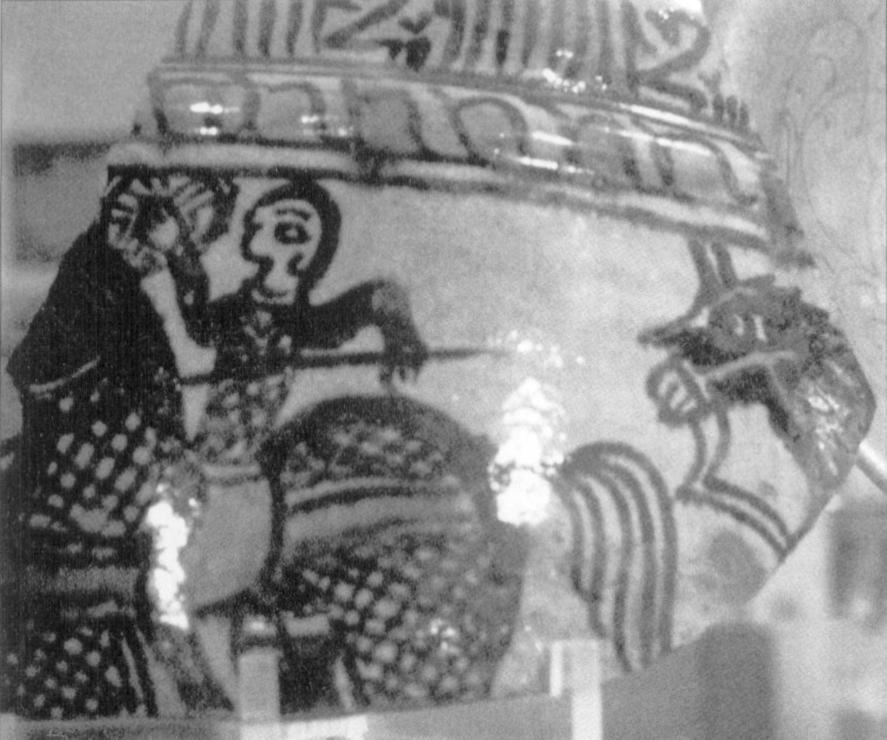Fatimid Ceramic Fragment from the Sabra Palace, Tunisia, 10-11th century |
Fatimid Ceramic Fragment from the Sabra Palace, Tunisia, 10-11th century |
p.7, The Moors - The Islamic West - 7th-15th Centuries AD by David Nicolle:
The stylistic similarities between this decorated ceramic fragment from the ruined palace at Sabra in Tunisia and the wall decoration from Madina al-Zahra are obvious. It dates from the 10th or 11th century. The horseman is bare-headed, has a long spear and small round shield, while parallels between his costume and that of more realistic pictures from 10th-century Iran suggest that he wears a short lamellar cuirass and baggy riding breeches. Though the cross-hatching on his horse might be merely decorative, it seems likely to represent horse armour, perhaps of quilted or felt construction. (Benaki Museum, inv.11762, Athens, Greece; author's photograph)
6. Forma chiusa (diam. cm 12.5). Atene, Museo Benaki, inv. n. 11762 (Philon 1980, Tav. VI.A)
[Philon 1980 in Archeologia della produzione negli spazi urbani ...]
Studi in memoria di Fabiola Ardizzone. 3. Ceramica by R. M. Carra Bonacasa, E. Vitale (2018)
Referenced as figure 675 in The military technology of classical Islam by D Nicolle
675. Ceramic fragment, 10-11th centuries AD, North African, Benaki Museum. Inv. 11762, Athens (Phil).
Plate C, The Moors - The Islamic West - 7th-15th Centuries AD by David Nicolle, based on this ceramic.